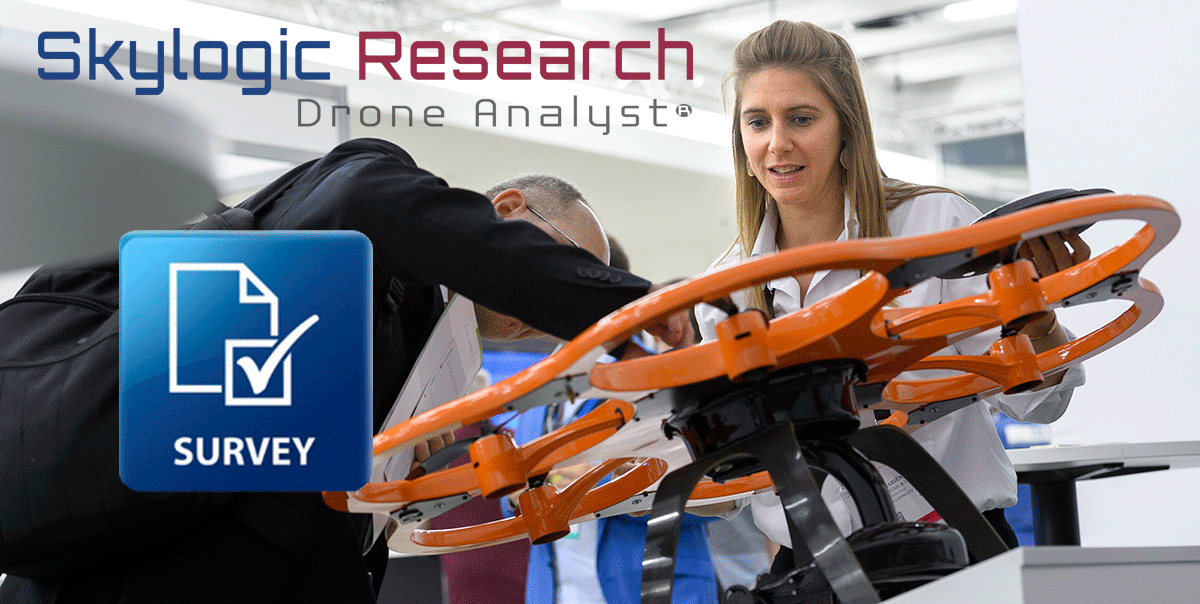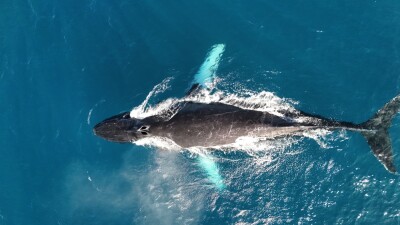You don’t have to look very far to find predictions about how many billions of dollars the drone industry is worth. It’s a good rule of thumb to not get caught up in the hype, especially since so many of those forecasts are based on a proxy, or estimation. Sometimes they’re nothing more than a person’s guess around what might happen. They’re not based on real data, which makes the efforts of Colin Snow, CEO and Founder of Skylogic Research, especially relevant.
Skylogic Research’s new survey is designed to find out what are people actually doing in the market by asking questions related to business concerns and how service providers are positioning themselves. The 2017 Drone Market Sector Research promises to be the most comprehensive study of drone market trends and usage to date. It’s the sort of detail that most of the forecasts that are floating around in this space are lacking, but their shortcomings are not the result of a single oversight.“Forecasts are always wrong, it's just a matter of how wrong,” Snow explained to Commercial UAV News. “That's the first thing you learn as a forecaster, and the farther out you go, the greater the error, which is the problem with many of the forecasts that are out there. Another issue is that they don’t consider how regulations raise uncertainty. Commercial drones operate in a regulated market. We have rules that allow certain activities, like the airspace you can operate in, or whether you can operate BVLOS, so that creates a level of uncertainty. Lastly, distinctions between drone product categories like consumer and commercial and even the types of buyers and users are very blurry in this market.”The numerous forecasts that are out there rarely cite market-based research and are not focused on buyer adoption rate. Skylogic’s research is set to be different since it will clearly articulate assumptions about where things are headed for the market, which will be based on what’s actually happening in it.Exploring some of those assumptions is going to be a critical aspect of this research, especially since many of them will be based on previous research. It will be enlightening to see what this effort will tell us about how specific drones and companies are positioned in the market. In that regard, DJI is a key company to keep an eye on, especially since previous research indicated their market share was around 50%. Could that number change?“What we think has happened in the last year is that as the commercial market has expanded, people are going in and using DJI as entry level,” Snow continued. “We think their market share has increased, so one of the things the research will tell us is whether that's true or not. We're asking people what drone they bought, how much they paid for it and what they’re going to us it for. Are they using their drone for hobby photography and video or commercial photo and video? Are they using it for surveying and mapping? Or construction? We want to know exactly what it is someone intends to do with that drone, and then we separate those out.” That separation is something Snow has detailed in numerous presentations at industry events, where he’s discussed things like the leading indicators and specific challenges that each vertical industry faces. He’s also very clearly outlined the percentages associated with adoption for all of the major verticals, and while he doesn’t foresee a major change to those percentages, it’s the volumes that will most important to keep an eye on.“We don't think there's going to be much of change in the percentages for all of the sectors, but that's because there's more entry level usage, and it's a result of the regulation," Snow mentioned. "The barrier to entry was lowered with Part 107, which created an entry point for people to come on board at the low end. That low end is aerial photography and video. We expect that to stay the same, but we think there will be more surveying and mapping, and that's because of the ease of use and ubiquity of automated flight planning and mission planning. It's very simple to download the pictures and send them to a laptop and create whatever image someone might need, whether it be photogrammetry or an orthomasaic. We think the volume will go up.”
That separation is something Snow has detailed in numerous presentations at industry events, where he’s discussed things like the leading indicators and specific challenges that each vertical industry faces. He’s also very clearly outlined the percentages associated with adoption for all of the major verticals, and while he doesn’t foresee a major change to those percentages, it’s the volumes that will most important to keep an eye on.“We don't think there's going to be much of change in the percentages for all of the sectors, but that's because there's more entry level usage, and it's a result of the regulation," Snow mentioned. "The barrier to entry was lowered with Part 107, which created an entry point for people to come on board at the low end. That low end is aerial photography and video. We expect that to stay the same, but we think there will be more surveying and mapping, and that's because of the ease of use and ubiquity of automated flight planning and mission planning. It's very simple to download the pictures and send them to a laptop and create whatever image someone might need, whether it be photogrammetry or an orthomasaic. We think the volume will go up.” As an illustration of why those numbers might go up in another industry, Snow mentioned a recent Farm Journal Pulse survey which asked about 1,000 respondents if they would be using drones in their operation this year. 32% said yes, but it’s not a simple matter of someone using a drone for commercial purposes or not. The specific approach is important, especially since a third of those survey respondents said they would use a service, which means many are planning to fly the drone themselves. That means it’s likely most of that usage is going to be for crop scouting rather than the info an agronomist would provide. It’s the difference between using a drone to get an aerial of a field, and gathering info that allows farmers to create and utilize an NDVI map.These differences and distinctions are the exact sort of info the survey is set to capture, and it’s why we’ll be paying close attention to the results when they’re released in September. Consider taking the survey to help provide a clear sense of business adoption trends and issues if you’re any of the following:
As an illustration of why those numbers might go up in another industry, Snow mentioned a recent Farm Journal Pulse survey which asked about 1,000 respondents if they would be using drones in their operation this year. 32% said yes, but it’s not a simple matter of someone using a drone for commercial purposes or not. The specific approach is important, especially since a third of those survey respondents said they would use a service, which means many are planning to fly the drone themselves. That means it’s likely most of that usage is going to be for crop scouting rather than the info an agronomist would provide. It’s the difference between using a drone to get an aerial of a field, and gathering info that allows farmers to create and utilize an NDVI map.These differences and distinctions are the exact sort of info the survey is set to capture, and it’s why we’ll be paying close attention to the results when they’re released in September. Consider taking the survey to help provide a clear sense of business adoption trends and issues if you’re any of the following:- Individuals or businesses who have purchased a drone in the past 12 months for any reason
- Commercial drone service providers
- Businesses that use drones or drone services as part of their company’s internal work or projects















Comments